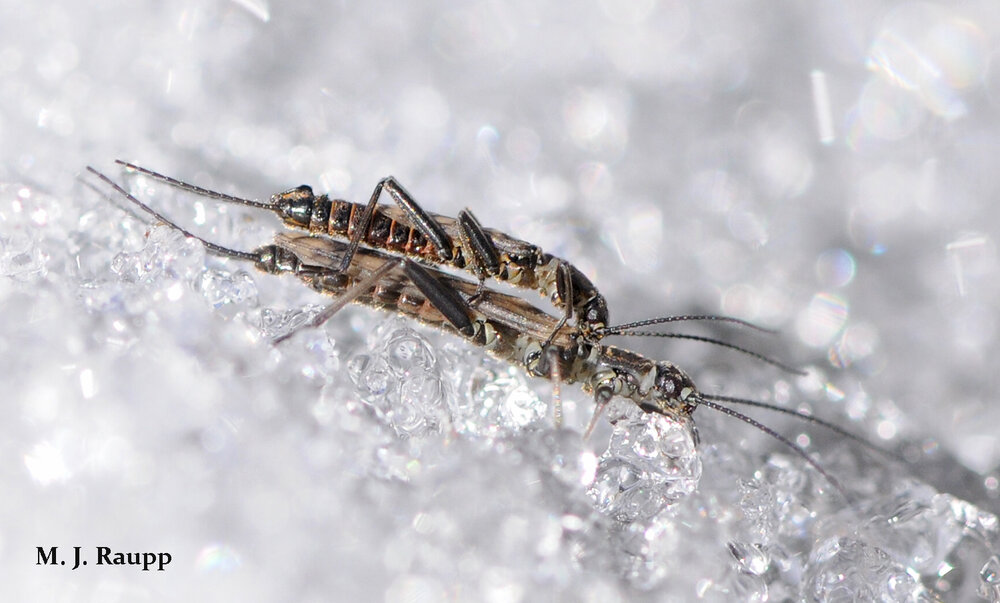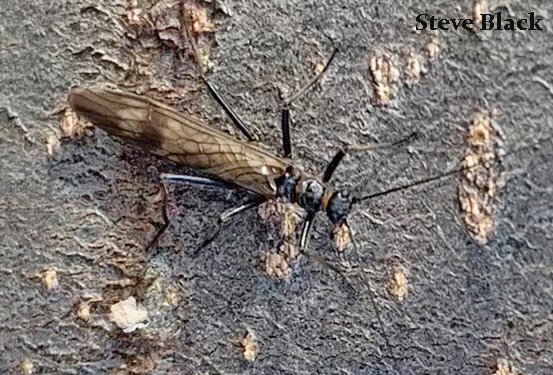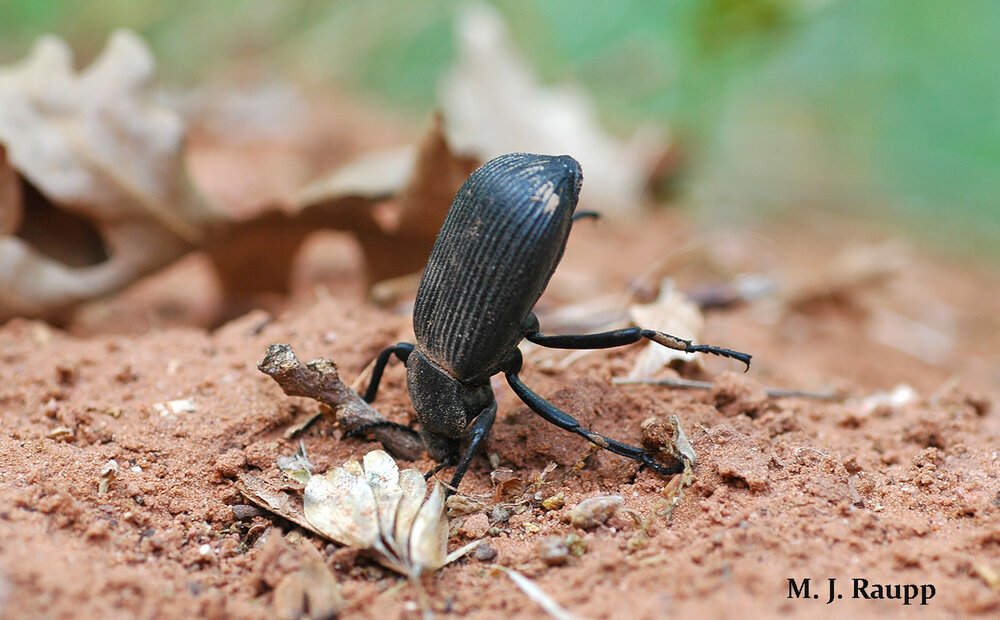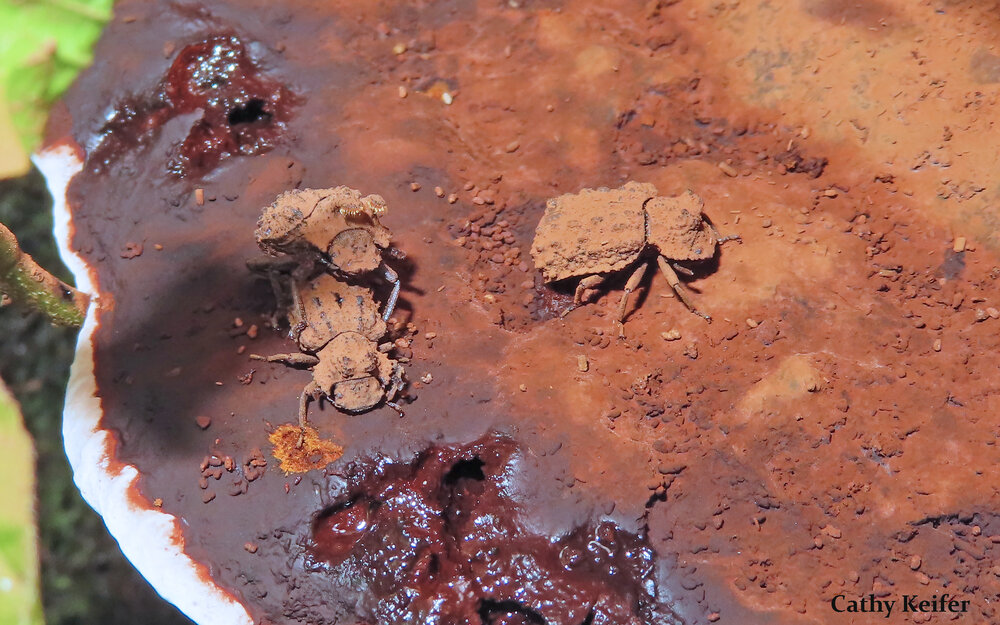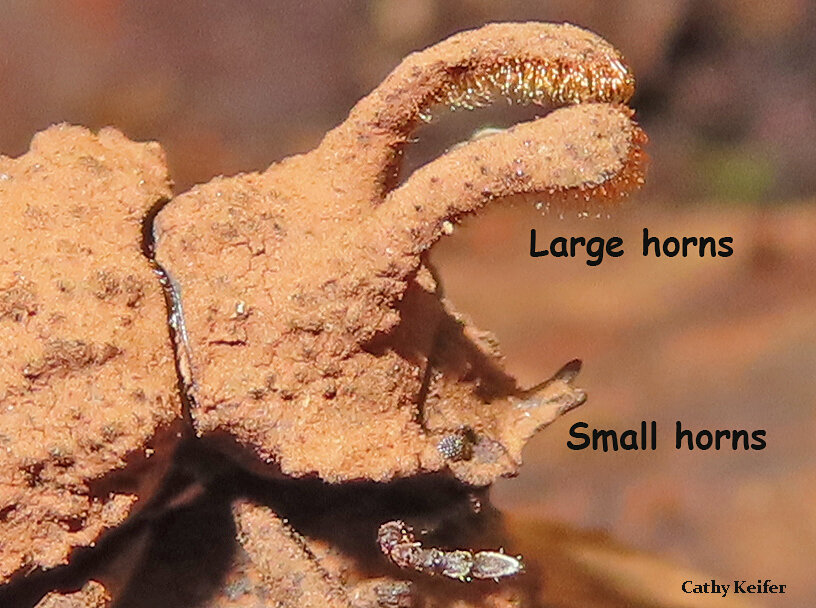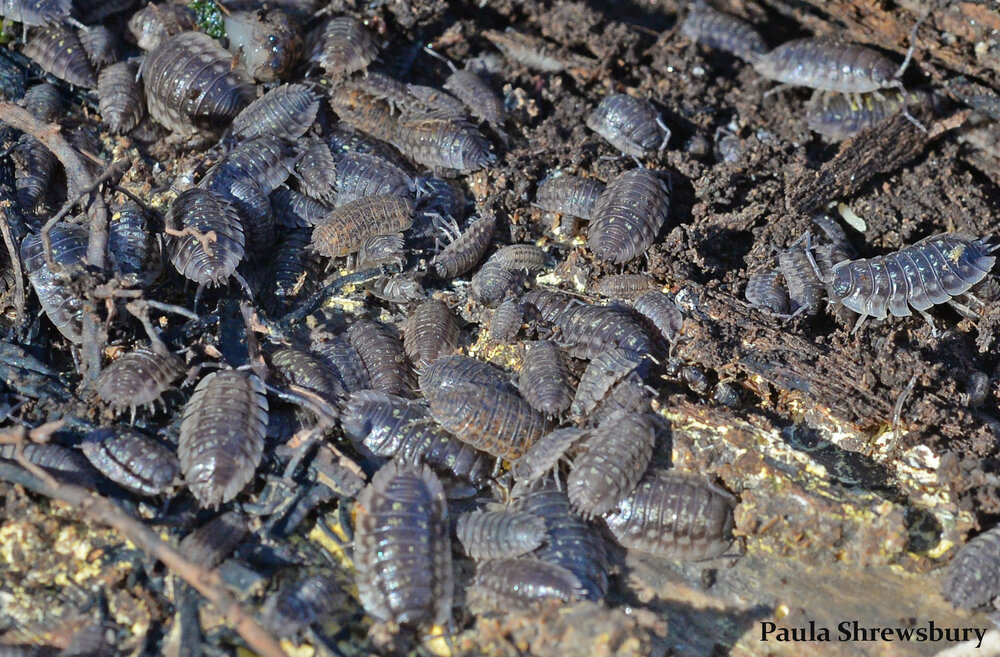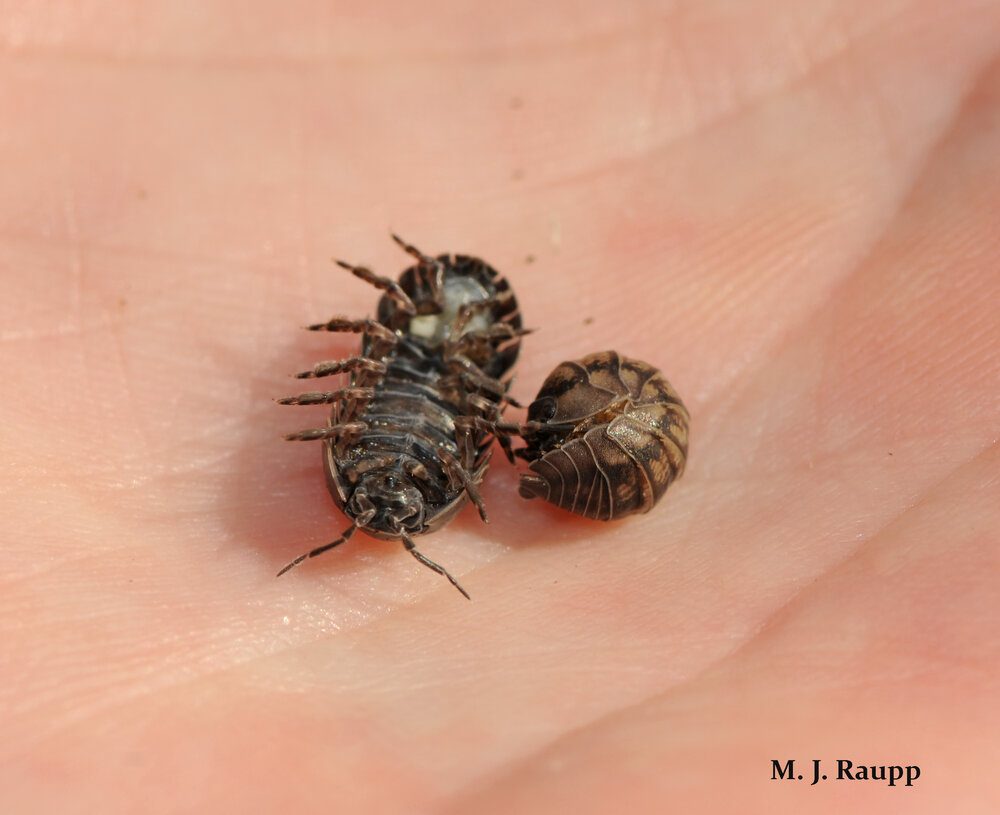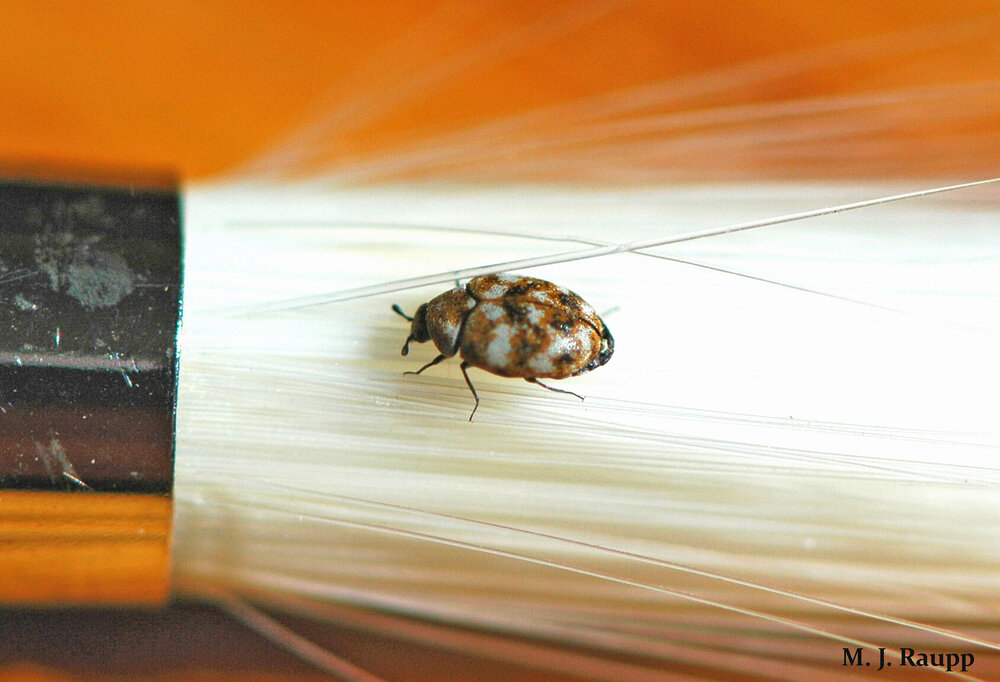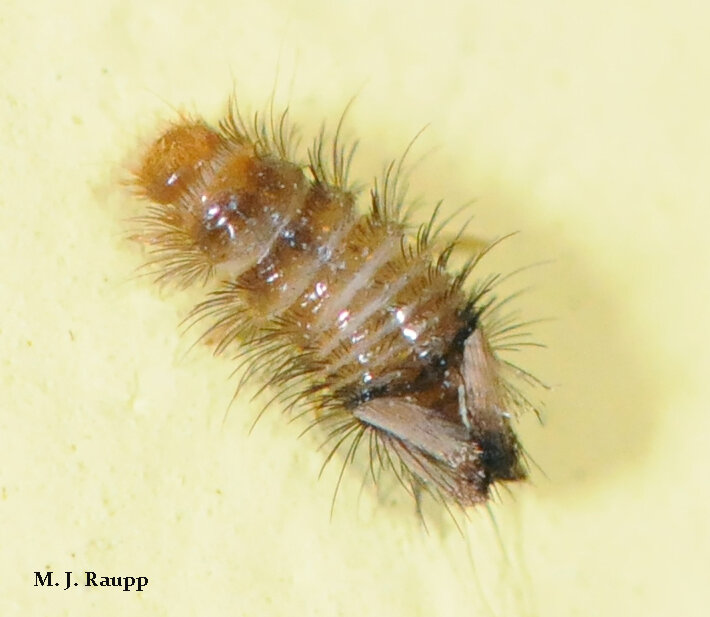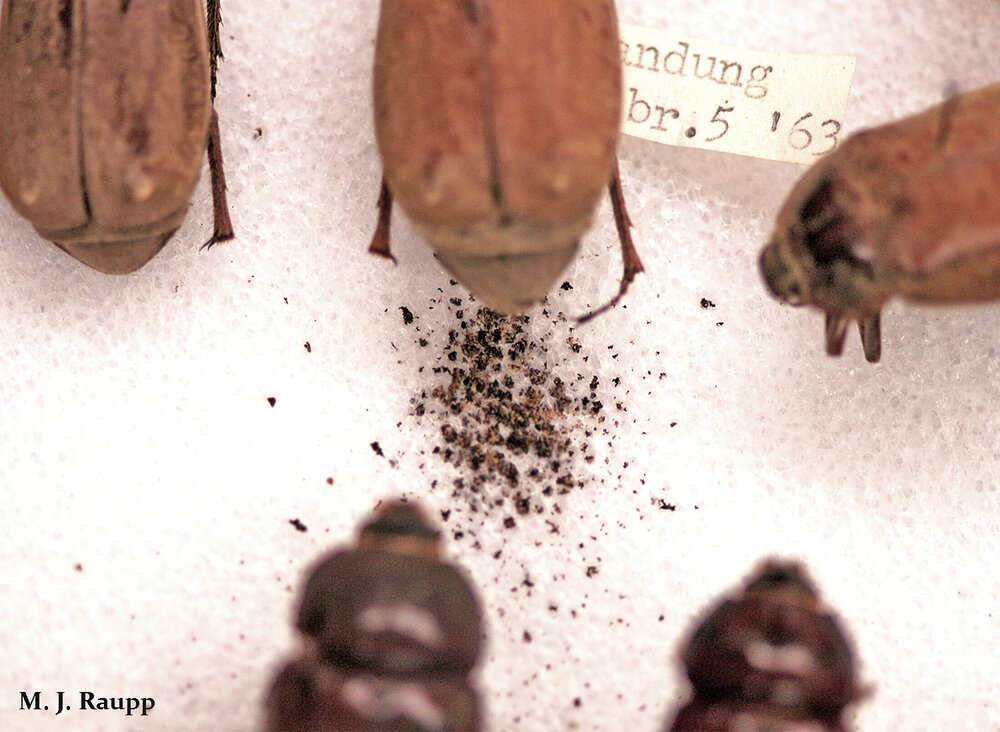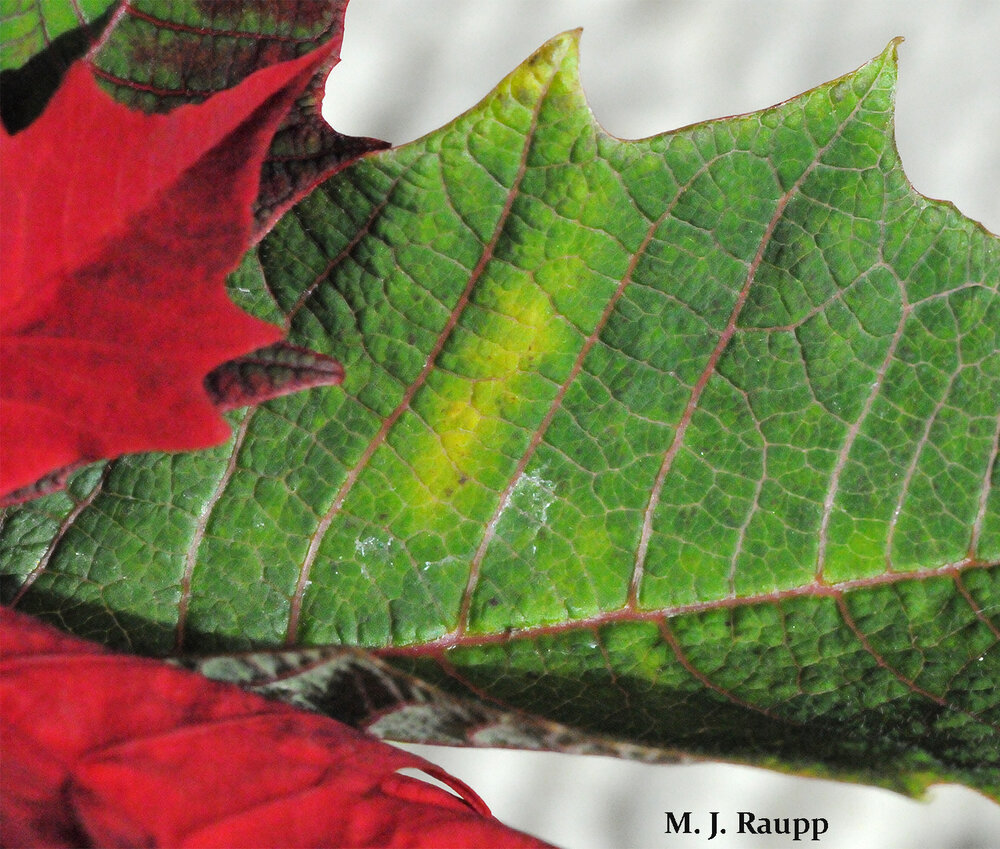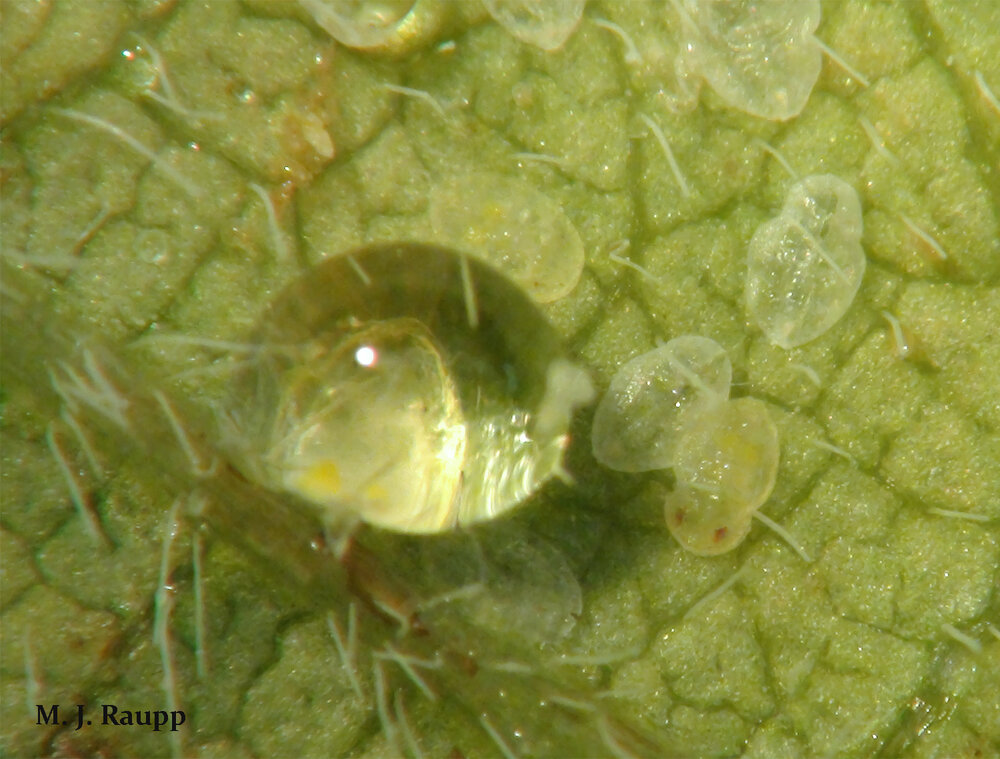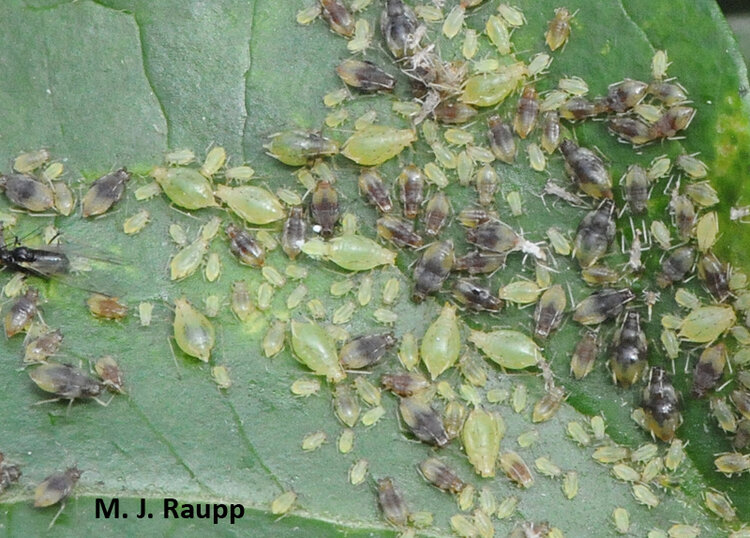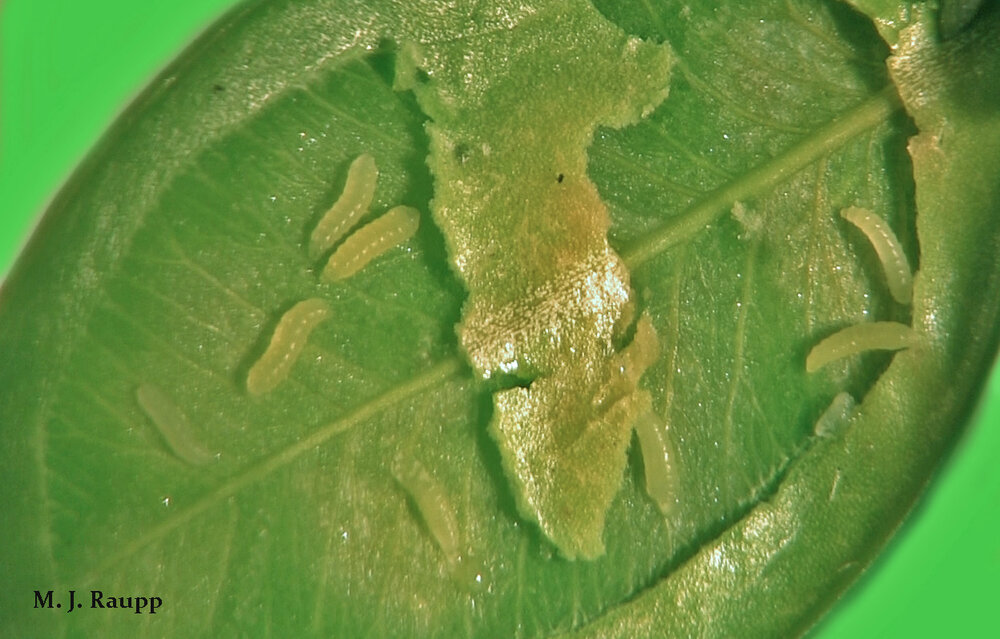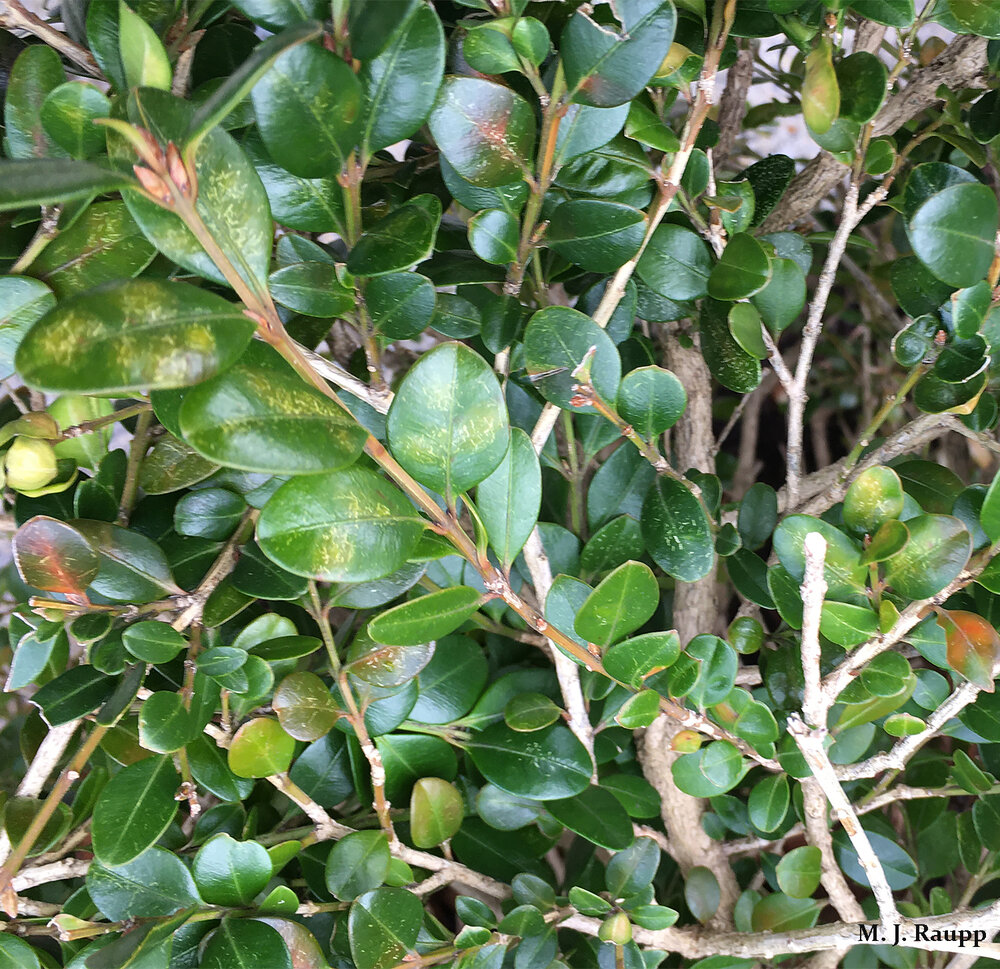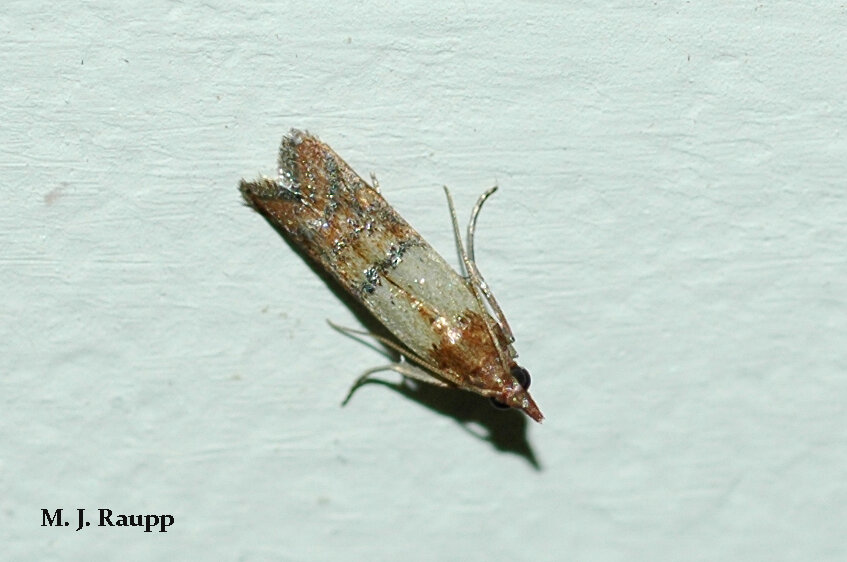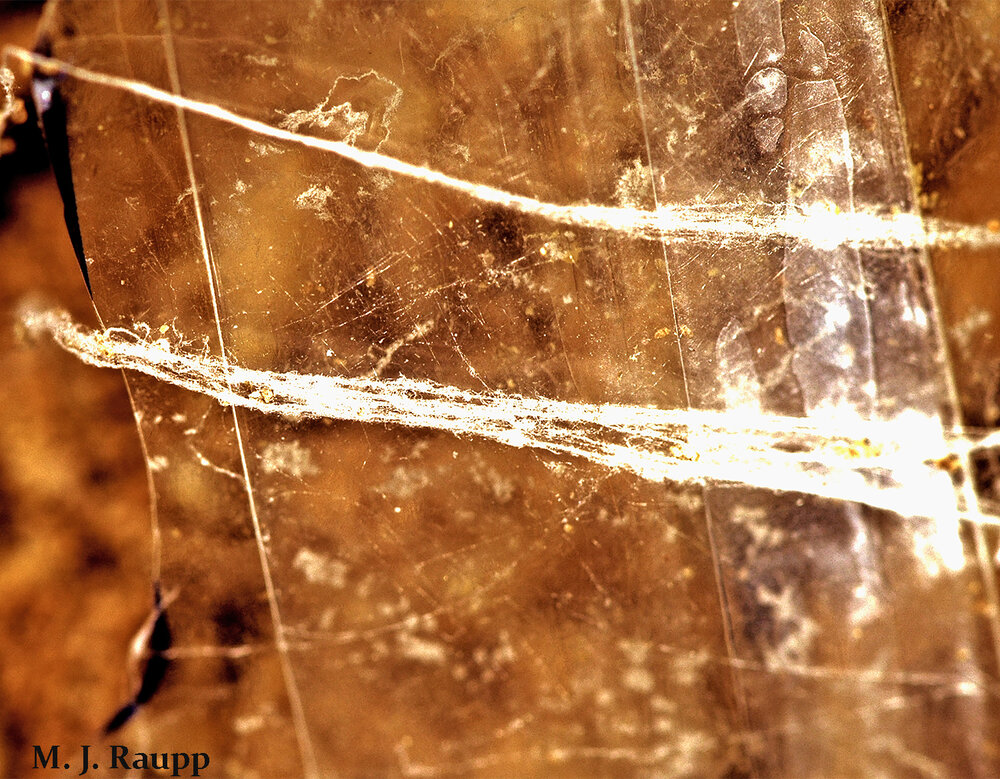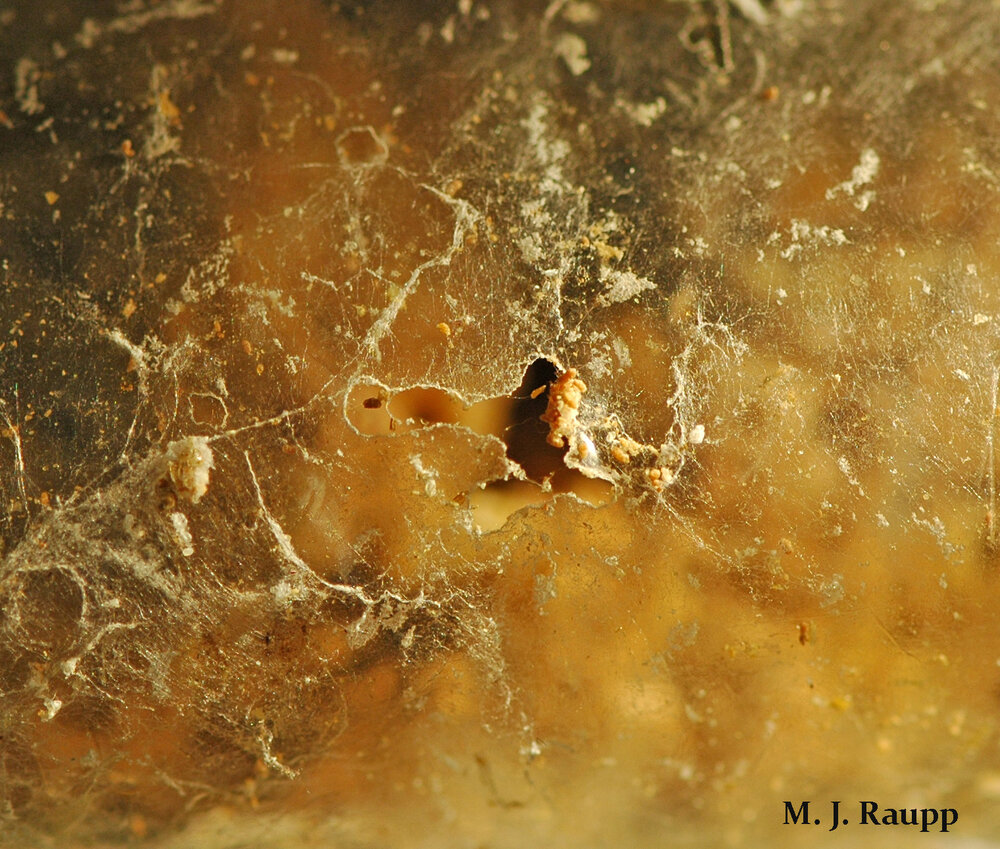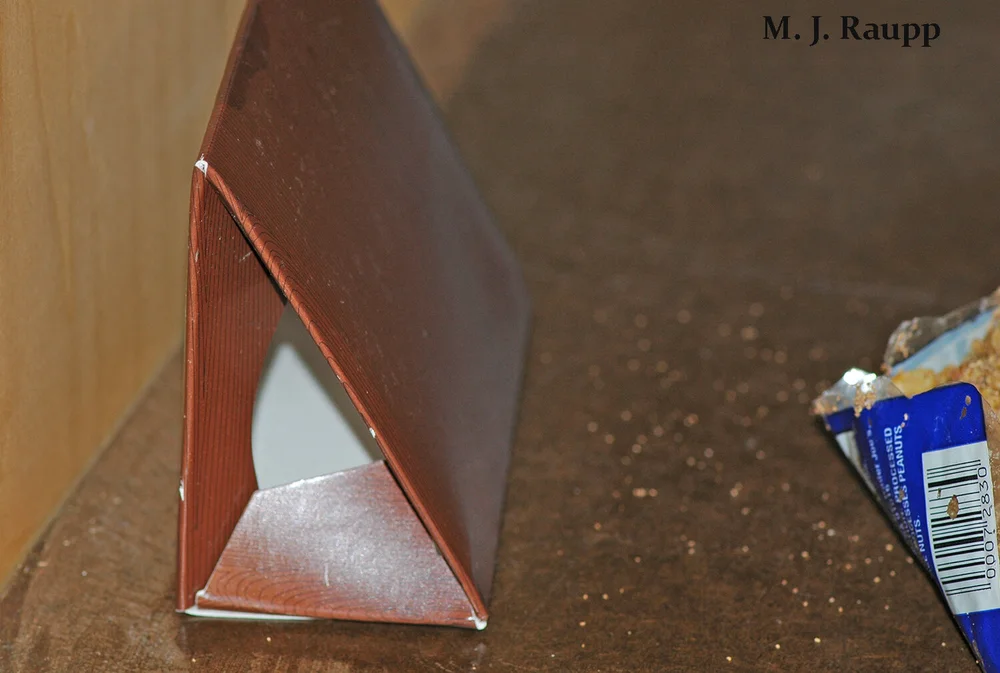Lovebugs, kissing bugs, and other insects engaged in intimate activities. What’s all this coziness about?
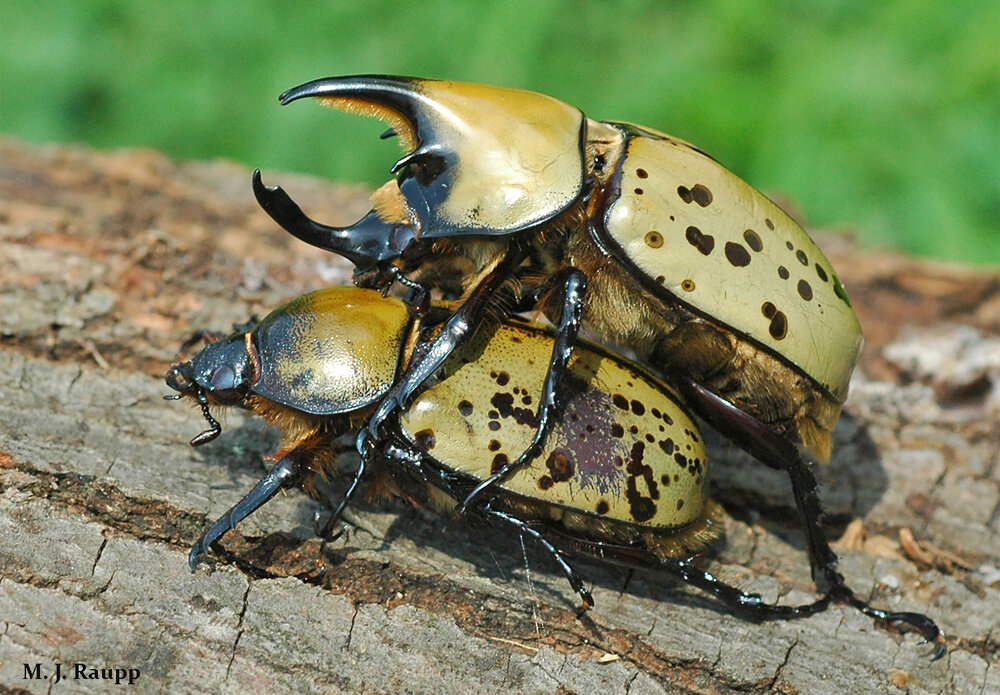
This pair of Hercules beetles doesn’t mind a public display of intimacy. By guarding his mate, he may prevent other suitors from mating with her. Males bear impressive horns used in combat with other males.
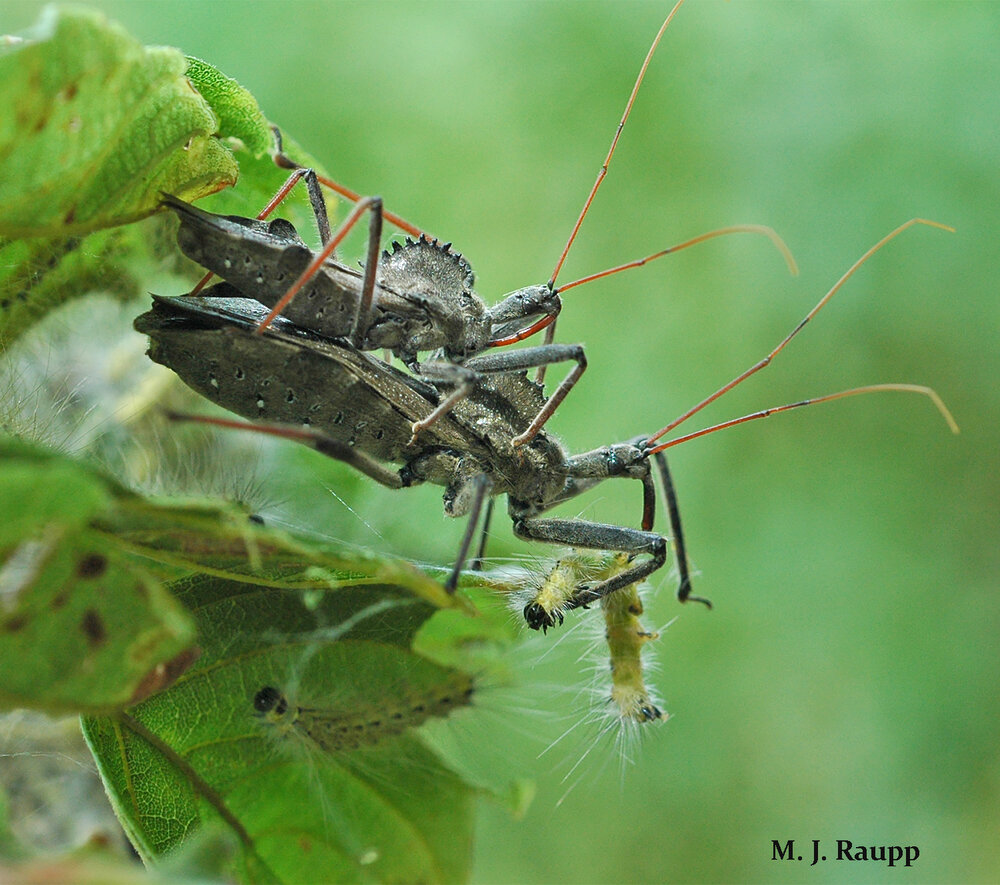
A dinner date of fall webworms hits the spot for awesome wheel bugs.
Next weekend we celebrate Valentine’s Day, a day named in honor of a third century Italian saint commemorated throughout the centuries by exchanging notes of love, romance, gifts of flowers and candy, and boatloads of affection. Several amorous characters take center stage in this Bug of the Week. Whether it’s a horny male Hercules beetle out for a romp on a stump, wheel bugs enjoying an intimate dinner of fall webworm caterpillars, or teenage cicadas celebrating a day in the sun after seventeen years underground, conjugal visits abound in the insect world. Let’s find out why.
For many animals, copulation is a short-term affair, measured in mere minutes or sometimes fractions thereof. However, insects depicted in this episode linger long with their mates, in some cases copulation lasts for hours and even days. Red-shouldered bugs we met in a previous episode may copulate for eleven days. How exhausting! Prolonged copulation and post-copulation “riding” of a male on the back of its mate is common in many orders of insects. By denying interlopers access to a female, prolonged mating and post-copulatory guarding by the male helps ensure that his sperm will be the ones which fertilize his mate’s eggs. In the world of insects, often the last mating before eggs are laid is the one that counts. This likely explains the oft observed pairings of so many male and female insects.
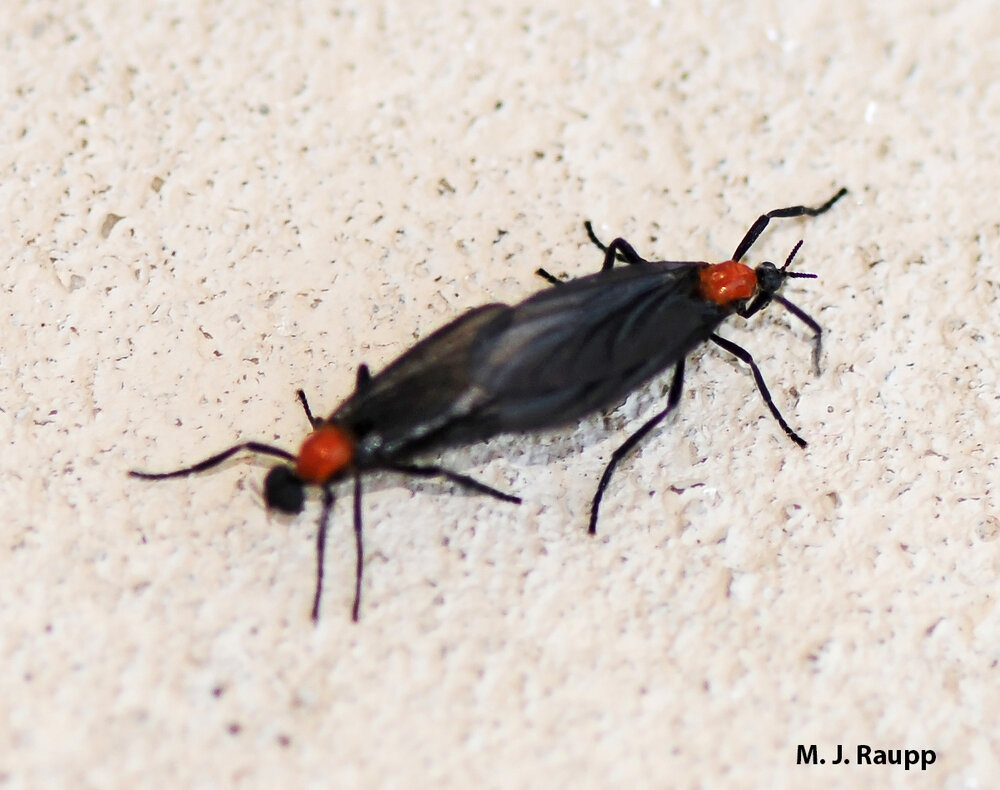
Lovebugs conjoin for hours during the mating season. FYI: male on the left, female on the right.
Long before Disney coined the term “Love Bug” for a rambunctious Volkswagen beetle, denizens of Florida and the Gulf states knew of another kind of lovebug. The Floridian lovebug is a small fly with a red thorax and black body and wings. The name “lovebug” derives from the fact that these small flies are often found intimately entangled. Lovebugs belong to a family called the Bibionidae. As larvae, bibionids eat decaying plant material and are important decomposers like isopods we met in a previous episode. After completing development in the soil, they pupate and emerge as adults. Adult flies do not bite or sting, but vast numbers emerge in spring and fall creating a real nuisance to residents in southern states. In addition to entering homes and bumbling about the garden, lovebugs splatter windshields of cars and trucks creating hazardous driving conditions. They become numerous enough to clog radiators of cars, causing them to overheat. One way to avoid these lovers is to drive in the late afternoon or evening when lovebugs are less likely to take wing.
Many Insects have prolonged copulation and often males guard their mates for hours or days following copulation. Just for fun, let’s look at a few. From first to last, they are: Damselflies coupled in the “heart” position for long periods of time; conjoined spur-throated grasshoppers basking in sun; camera-shy periodical cicadas that will appear by the trillions this spring when Brood X appears; peripatetic milkweed bugs playing push me, pull you; gorgeous dogbane beetles enjoying dinner and a date on their heart-stopping host; male margined carrion beetles engaging in shaky business with their mates; female thread-waisted wasps dining on pollen while their mate hitches a ride; and adorable male horn-faced mason bees fending-off suitors while guarding their betrothed.
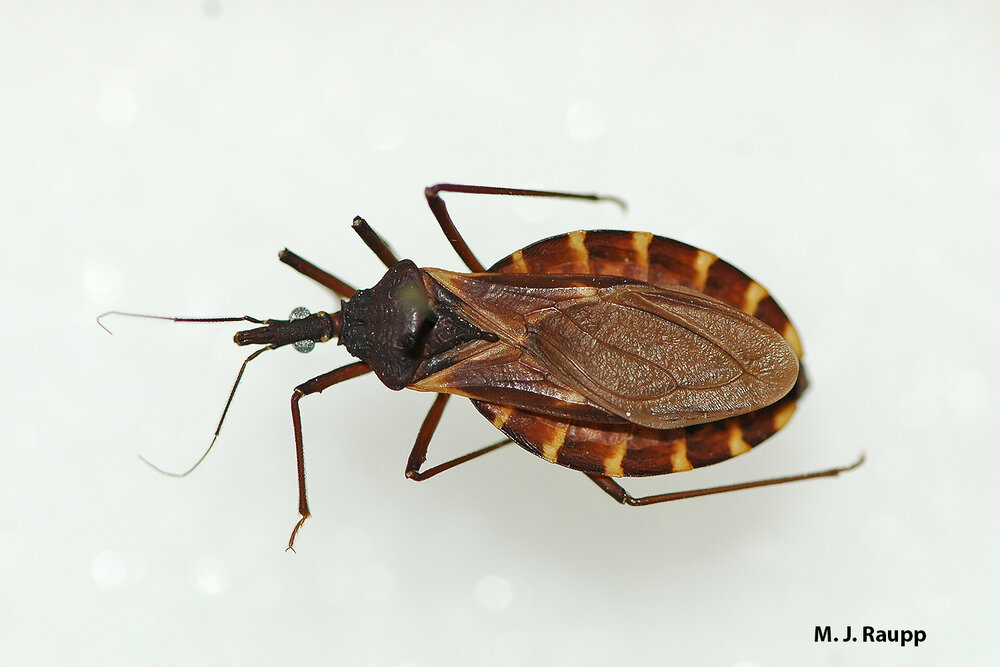
Kissing bugs get their name by sucking blood from tender spots, including lips of hapless human victims.
With respect to kissing and kissing bugs, many would agree that kissing ranks right at the top when it comes to affection. However, the kiss of the kissing bug can be oh, so much more than that. Kissing bugs belong to a family of sucking insects called assassin bugs. Assassin bugs are predators, predators with long beaks which they use to suck blood from many other kinds of animals. Kissing bugs take the act of predation one step further. Their primary source of food is the blood of vertebrates, including mice, dogs, and humans. During the day, kissing bugs hide in crevices in plaster, cracks between boards, or in gaps in thatched roofs. At night, these little vampires leave their refuge and quietly seek unsuspecting humans to suck their blood. They may feed on any exposed body part, but look out, their dining preferences swing to tender tissues on people’s faces, especially the lips, hence the name kissing bugs. In southern Texas, Central and South America, kissing bugs are common. For most people the bite of the kissing bug may go unnoticed, or it may leave no more than a small red mark. But for those allergic to the saliva of kissing bugs, itchy welts, rashes, and swelling can occur. As with the introduction of any foreign protein into the body, anaphylactic reactions are a concern. A greater worry associated with kissing bugs is their ability to vector a nasty parasite called Trypanosoma cruzi, the causal agent of a sometimes fatal disease called Chagas disease. The parasite is ingested by the kissing bug as it feeds on an infected animal. Carried in the gut of the kissing bug, the parasite issues forth when the kissing bug defecates on a victim’s skin. An abrasive scratch by the victim or a small puncture in the skin allows the parasite to enter the body and wreak havoc. How disturbing! While most common in regions of Central and South America, kissing bugs can be found as far north as Pennsylvania on the east coast and California on the west coast. If your adventures take you to rural areas of Mexico, Central or South America where Chagas disease is endemic, always sleep inside your netting and remember, no kissing the kissing bugs, even if it is Valentine’s Day!
Acknowledgements
The intriguing article “The adaptive significance of mate guarding in the soapberry bug, Jadera haematoloma (Hemiptera: Rhopalidae)” by Scott P. Carroll, the great Featured Creature fact sheet “common name: lovebug scientific name: Plecia nearctica Hardy (Insecta: Diptera: Bibionidae) Introduction – Classification – Distribution – Description – Key to the Species – Dilophus sayi – Behavior – Hosts – Economic Importance – Management – Selected References” by H.A. Denmark and F.W. Mead, and the CDC Chagas disease website were consulted to prepare this episode. Bug of the Week thanks Marcia Shofner for the inspiring this heart-warming Valentine’s Day episode.
This post appeared first on Bug of the Week
